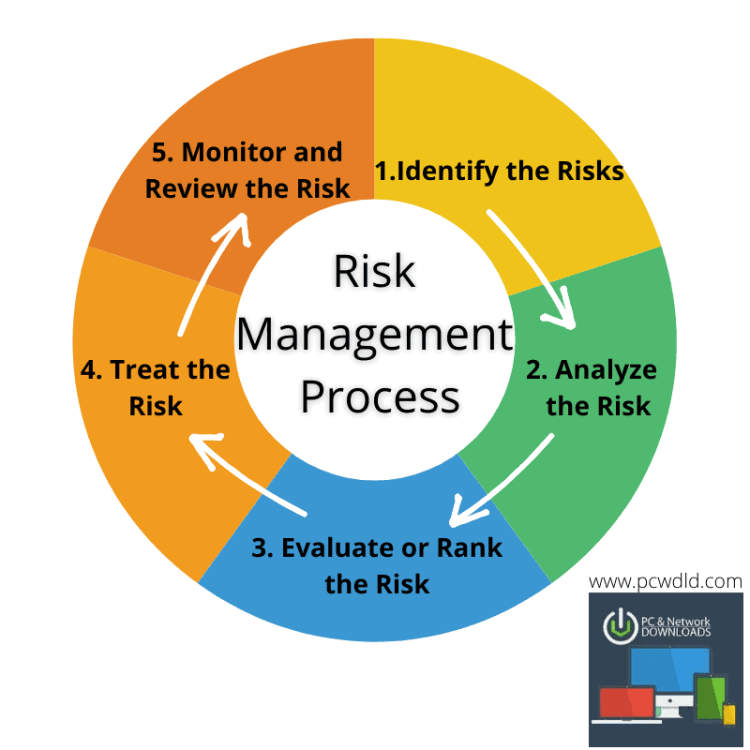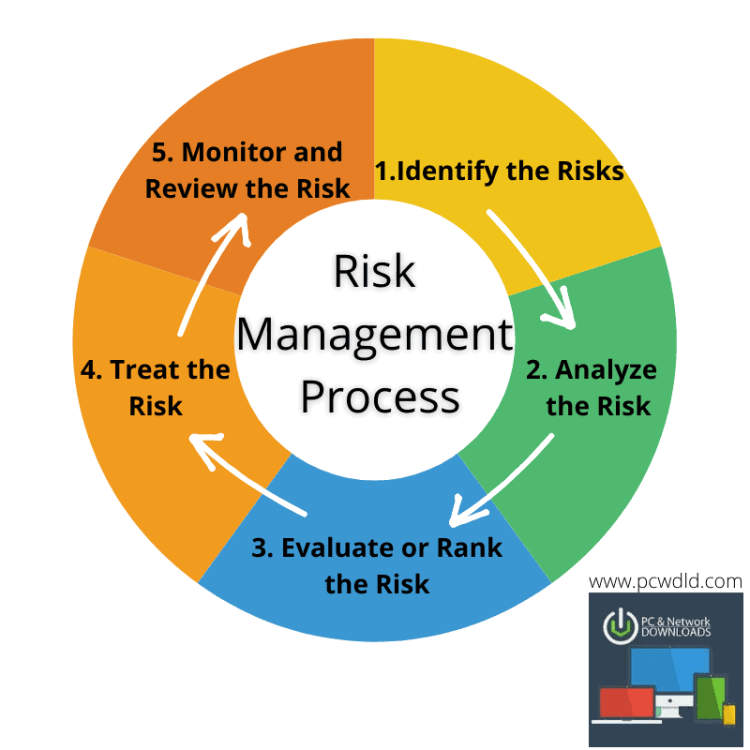As a business owner, managing financial risks is an integral part of the job. Without taking into account possible risks, businesses can find themselves in challenging financial positions, due to external or internal factors. Therefore, having an effective risk management strategy is essential for staying competitive in the financial landscape.
The following article outlines 5 effective risk management strategies in the realm of finance. From analyzing data to financial forecasting and insurance, each strategy has been carefully chosen to help protect your business against a variety of financial risks.
What is Risk Management?
Risk management is the process of identifying, assessing, and controlling risks with the aim of minimizing their potential negative impact on a business. Risk management is essential to the success of all organizations, as it reduces the likelihood of major losses and maximizes the potential rewards from taking on risks. There are a number of risk management strategies that can be used in the realm of finance, with the goal of minimizing financial losses.
Risk management involves analyzing the current and potential risks that a business may encounter. It then develops strategies to address these risks and minimize their potential impacts. It also monitors and updates risk management strategies to ensure that they remain effective. Risk management also involves measuring and quantifying risks, as well as documenting and reporting them to higher management.
In the realm of finance, businesses must be aware of various risks such as market volatility, credit risk, and legal risk, as well as potential opportunities. Effective risk management strategies can help businesses protect their profits and investments, as well as achieve their financial goals. Here are five strategies to help manage risks in the realm of finance:
5 Effective Risk Management Strategies in the Realm of Finance
- Managing credit risk – Credit risk is the risk that a customer will default on their loan or other obligations. To mitigate credit risk, businesses should consider implementing credit policies and procedures, and regularly monitoring customer accounts.
- Managing market risk – Market risk is the risk that a business’s assets will decrease in value as a result of changes in market conditions. To mitigate market risk, businesses should diversify their investments across different markets, use hedging strategies, and have proper risk management systems in place.
- Managing liquidity risk – Liquidity risk is the risk of running out of cash or not having enough cash to cover operating expenses. To mitigate liquidity risk, businesses should maintain adequate cash reserves, invest in short-term investments, and have a solid debt management plan.
- Managing operational risk – Operational risk is the risk resulting from inadequate or failed internal processes, personnel, or systems. To mitigate operational risk, businesses should have proper internal controls in place, develop contingency plans, and review their operations regularly.
- Managing legal risk – Legal risk is the risk of facing legal actions due to the failure to comply with contracts or laws. To mitigate legal risk, businesses should have a solid understanding of the applicable local laws, and ensure that their contracts and agreements are properly documented.
Why is Risk Management important in the Finance field?

Risk management is critical for all organizations, especially those in the finance industry. The banking, investments, and insurance sectors have a long history of managing risks, given the sheer size and complexity of investment vehicles, and the need to ensure that customer deposits are protected. With the introduction of financial technology, the way risk is managed has become increasingly complex, which is why having a strong risk management strategy is essential for today’s financial institutions.
The importance of risk management in the financial sector can be summed up in three key points:
- Proactive approach to identifying, measuring, and mitigating risks.
- Improved visibility into operations.
- Potential to reduce operational and financial loss.
One of the key goals of any risk management strategy is to identify and quantify risks before they impact organizations. This involves measuring the operational, legal, financial, and strategic implications of certain activities, as well as any external factors that may affect the organization. By understanding the likelihood and severity of various types of risk, organizations can prioritize their strategies and allocate resources accordingly.
The second key goal of risk management is improved visibility into operations. Access to real-time data and insights into financial performance, customer behaviors, and market trends can help organizations proactively identify potential issues before they become a major problem. A successful risk management strategy can also help to reduce the impact of any losses that might occur by minimizing the severity of the damage.
The last goal of risk management is reducing operational and financial loss. Being able to identify potential risks and take steps to mitigate their impact can help organizations prevent a major disaster from occurring. A successful risk management strategy can also help organizations to better manage their financials, ensuring that customer deposits and funds are protected. This helps to ensure the longevity and success of the organization.
Risk management is an integral part of the finance industry, and having an effective strategy in place is essential. Doing so can enable organizations to take a proactive approach to risk and protect their operations. This can ultimately lead to a more successful and secure financial institution in the long run.
Effective Risk Management Strategies
Good risk management strategy is essential in order to protect your business or investment from losses. Effective risk management strategies are designed to identify, assess, control, and minimize risks, allowing you to create a more secure environment and increase profitability. In the realm of finance, there are five key strategies that can help manage risk more effectively.
1. Risk Identification
The first step in any effective risk management strategy is to identify potential risks and their sources. This involves analyzing current and future trends, conducting a risk assessment, assessing the level of risk tolerance, and considering a variety of scenarios. Risk identification should be done with both internal and external information and resources.
2. Risk Evaluation
The next step is to evaluate the risks identified. This process requires considering all possible outcomes and their potential effects on the organization. It also involves understanding the probability of different events occurring. This will help to create an informed decision making process when selecting strategies and solutions.
3. Risk Control
Once risks have been identified and evaluated, it is important to develop strategies to control them. This involves using processes such as insurance, setting limits on exposure, and diversifying investments. These strategies will help to reduce the likelihood of losses.
4. Risk Mitigation
In addition to controlling risks, it is important to take steps to mitigate them. This involves developing backup plans and strategies, as well as creating contingency funds and reserving resources. These steps should be taken to ensure that losses are minimized in the event of an unexpected event.
5. Risk Monitoring
Finally, effective risk management strategies also involve monitoring risks on an ongoing basis. This involves regularly reviewing and assessing current risk levels, making changes as needed to control and manage them. It is also important to take corrective action if necessary.
Implementing Strategies to Manage Risks
Risk management is a fundamental process to manage investments within any financial realm. This process involves identifying possible risks, assessing them, and then deciding on different strategies to minimize their impact. There are many strategies that you can use to ensure effective risk management, such as diversification, hedging, and insurance. However, there are several other strategies that are currently being used and have proven to be effective. In this article, we’ll examine five effective risk management strategies in the realm of finance.
1. Invest in Low-Risk Financial Instruments
The first strategy is to invest in low-risk financial instruments. These instruments carry low levels of risk and can help balance out the risk from higher-risk investments. Examples of low-risk financial instruments include government bonds, certificates of deposit, and money market accounts. These investments may provide less of a return than other investments, but they provide a much safer way to invest your money.
2. Diversification
Diversification is often considered one of the most important risk management strategies. Diversified portfolios help to distribute the risk across different asset classes and lessen the potential for big losses. Examples of diversified investments include a mix of stocks and bonds, foreign investments, real estate, and other investments.
3. Hedging
Hedging is an excellent way to limit losses from volatile investments. A hedge is a type of investment that can protect the portfolio from the downside risk in another investment. For example, using a mix of stocks and bonds to create a hedge between the two asset classes can help reduce the risk in the portfolio.
4. Hedging With Options
Hedging with options is another effective risk management strategy that can be implemented in the financial realm. Options are contracts that give the holder the right, but not the obligation, to buy or sell a particular security. By using options, investors can limit their potential losses while still participating in the markets.
5. Insurance
Last but not least, insurance is another important risk management strategy. Insurance is used to protect against potential risks. There are many types of insurance available, including life insurance, health insurance, disability insurance, liability insurance, and more. Insurance can help to protect your investments and provide a layer of security.
These are five effective risk management strategies in the realm of finance. By implementing these strategies, investors can limit their potential losses while still participating in the markets.
Common Risks in Financial Management
Financial risk management is a process used by businesses, governments, and non-profits to analyze, identify, and prioritize risks. It’s essential to the survival of any organization that deals with money, as even small risks can have a noticeable impact on the bottom line. Common risks include market risk, inflation risk, counterparty risk, and liquidity risk.
Market Risk
Market risk, also known as systematic risk, is the inherent volatility of the markets. It refers to the possibility of investments declining due to changes in the macroeconomic environment, including interest rate fluctuations, political instability, and global events. Market risk can be partially mitigated through diversification, which involves investments in multiple assets that do not necessarily move in tandem with one another.
Inflation Risk
Inflation risk is the possibility of unforeseen increases in the prices of goods and services. This type of risk affects not only prices, but also spending power, as money is worth less when prices rise. As such, inflation risk can affect the profitability of a business, particularly if it doesn’t take into account potential future increases in prices when setting prices for goods and services.
Counterparty Risk
Counterparty risk, also referred to as credit risk, is the possibility of a transaction not being completed as expected. For example, if one party to a transaction makes a misrepresentation or fails to honor their end of the agreement, the other party may be forced to take legal action. This form of risk can be especially profound in complex transactions that involve multiple parties.
Liquidity Risk
Liquidity risk is the potential inability of an organization to access the funds it needs in order to meet its obligations. This type of risk is usually associated with investments or loans made in relatively illiquid markets, as well as investments held for a long period of time. Liquidity risk can be mitigated through careful planning and diversification. In conclusion, there are many common risks in financial management, including market risk, inflation risk, counterparty risk, and liquidity risk. These risks must be managed properly to ensure that the financial health of an organization is not adversely affected.
Conclusion
Risk management is an important factor of success for any business. The strategies explored in this article provide a basic understanding of the various approaches available and should be considered for any venture entering the realm of finance. By utilizing these strategies, organizations can develop procedures to create effective alerts and warnings to prevent any financial losses due to uncertain events. Additionally, proper risk management provides organizations with the assurance that their financial systems are secure and reliable.
It is essential for organizations to become fully aware of potential risks and develop a set of procedures designed to address any potential problems. Organizations should focus on maintaining a proactive, risk-centric attitude and create a plan to review their performance regularly. Adopting these strategies can help organizations remain prepared for any financial risks in the foreseeable future, and help them stay successful in their business endeavors.




